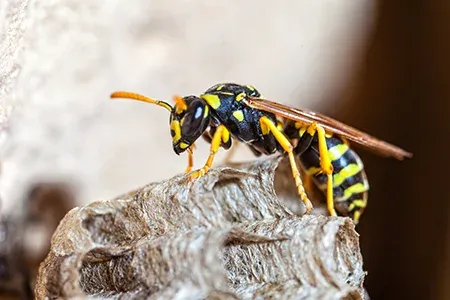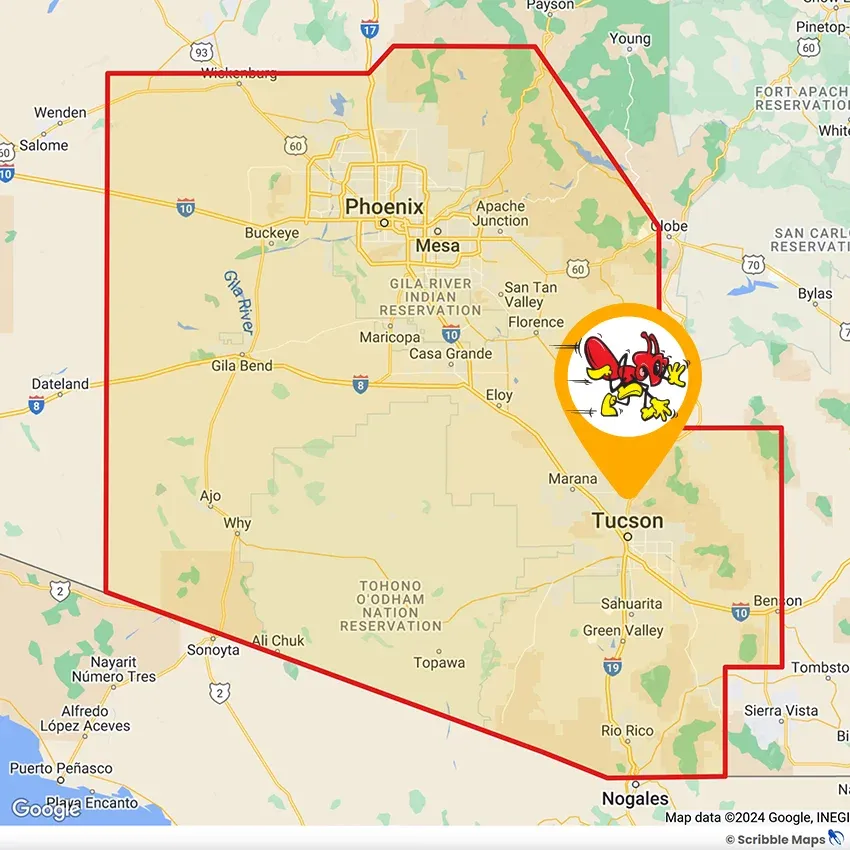Stinging Insect Removal in Tucson
Imagine stepping into your backyard for a peaceful morning coffee, only to be greeted by an aggressive buzzing that sends you rushing back indoors. When stinging insects claim your outdoor space, you need a solution that works without harming the environment. At Termagon, our wasp extermination and bee control services provide effective treatment while respecting beneficial pollinators in your ecosystem.
Our Stinging Insect Control handles these common stinging insects:
- Bumblebees
- Honeybees
- Carpenter bees
- Yellow jackets
- Paper wasps
- Hornets
- AND Mud daubers
We understand the delicate balance between removing problem insects and protecting pollinators. With 30 years of experience, we've developed methods that provide long-term relief from stinging insects while maintaining ecological responsibility. Contact us today for a yard you can fully enjoy again!
Honeybees and Bumblebees

Wasps
While honeybees and bumblebees are generally gentle and non-aggressive, wasps have a very different temperament. The common wasp is slimmer and more elongated than a honeybee, with bold yellow and black stripes, long dangling legs, and a sharply defined face. Most wasps live solitary lives, hunting other insects rather than forming colonies. Despite their aggressive nature, they still play an important ecological role, helping with pollination and controlling agricultural pests by preying on harmful insects.
The wasps people most often encounter, however, are social species such as paper wasps, yellow jackets, and hornets. Yellow jackets have noticeably shorter legs compared to paper wasps, while the bald-faced hornet stands out for its mostly black body and distinctive white face. All three types build “paper” nests from chewed wood fibers, but their nesting habits differ: yellow jackets typically nest underground, paper wasps build open umbrella-shaped nests, and bald-faced hornets create large, football-shaped nests. Like honeybees, these wasps are drawn to protected spaces, so it’s common to find their nests tucked under eaves, decks, or other sheltered areas around a home.
Need Removal? Call Termagon
Removing these insects yourself is not recommended. Removal requires that you have protective gear, specialized containers for removing hives, and a place to transfer them to. If you try to exterminate them with an insecticide, this will provoke the swarm and harm the environment. Even in cases where you successfully remove the hive, the pheromones left behind will attract other bees, starting the process all over again.
Your best bet, then, would be to call Termagon Termite & Pest Control because we’re professionals when it comes to bee and wasp removal. Contact us for a free inspection.
At Termagon, we proudly serve various communities throughout Arizona, providing tailored pest control solutions for both residential and commercial properties. From Phoenix to Tucson and beyond, our expert team is ready to tackle any pest problem. Wherever you are, we ensure your space remains safe and pest-free.








